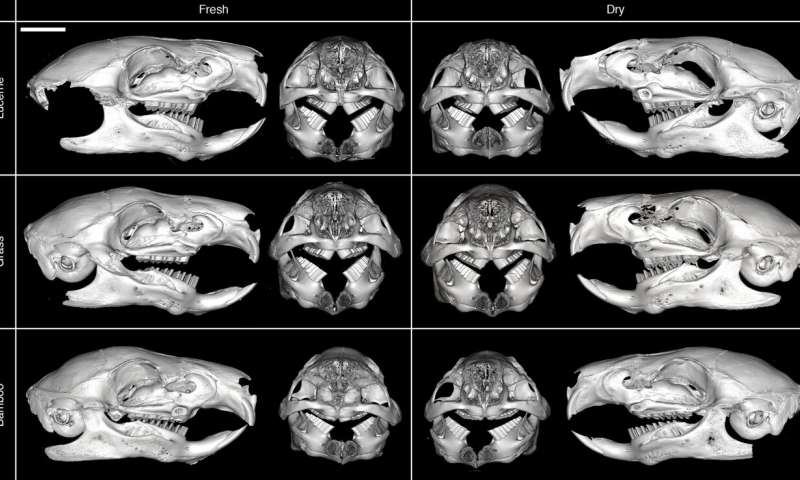Administration of the project
Examining Wear on the Teeth of Herbivores
Individuals who deal with the health of animals on a regular basis are keenly interested in understanding the wear processes that affect the teeth of herbivores. Understanding these wear processes will potentially lead to the ability to prevent future dental issues in the animals under their care. Unfortunately, very little is currently known about the processes causing the tooth wear.
The wearing down of the teeth of herbivores occurs as a result of the continual grinding of plant material. Teeth are primarily composed of two different materials, namely enamel and dentin. The enamel makes up the hard outer layer of the tooth that is visible outside of the gums. Enamel is also considered the hardest mineral. Dentin is a hard, light yellow material creating a porous layer of tissue directly underneath the enamel and cementum. Dentin is the material that actually makes up the largest portion of the tooth; it is comprised of crystals of phosphate and calcium, is softer than the enamel, yet still harder than bone.
The surfaces of herbivores’ teeth are not smooth, but instead are fairly rough as they consist of hard ridges of enamel with areas of dentin found between those ridges. As an animal ages, the surfaces of the teeth become rougher, with the enamel ridges more pronounced. This occurs because the enamel and dentin wear down unevenly. Jean-Michel Hatt, a professor at the University of Zurich in the Clinic for Zoo Animals, Exotic Pets and Wildlife states that research looking at how dentin erosion reacts to coarse food material is limited.
Phytoliths erode the dentin in the teeth as the animal chews various plant materials. Phytoliths are inorganic particles primarily made up of silica and are found in many plants, including grass. Researchers from the Johannes Gutenberg University Mainz, led by Jean-Michel Hatt, examined the effect of phytoliths found in various plants had on the teeth of guinea pigs. Conducting the experiment involved dividing the animals into three groups. The first group received a diet of fresh lucern lettuce, which contains no phytoliths, and should, therefore, result in less tooth erosion. The second group ate a diet of regular grass, which does contain phytoliths. Finally, the third group had a diet of bamboo leaves, which contain a very high level of phytoliths.
To examine the wear patterns on the guinea pigs’ teeth, the researchers employed micro-computed tomography, using 3-D imaging and X-rays. Examining the wear patterns on the teeth of the three groups demonstrated clear differences, with researchers easily able to distinguish which animals belonged to which group. By taking a closer look at the teeth and comparing between the three groups, researchers determined that the guinea pigs that were fed a diet of bamboo had shorter teeth as a result.
The results indicate that the animals eating a diet containing more phytoliths experienced greater dentin erosion. Therefore, the guinea pigs fed a bamboo diet experienced greater erosion than those who ate grass which, in turn, experienced more erosion than the guinea pigs who dined on lettuce. As the dentin eroded, the enamel ridges became more exposed. The exposed ridges then become more susceptible to greater erosion themselves, leading to less stable teeth.
The results of the research have some clear implications regarding the best diets for our herbivore animal friends. The findings do not correlate to carnivores, as the teeth of carnivores are completely covered by enamel.
Further details regarding the researchers’ findings can be found in the Royal Society Publishing article “The Way Wear Goes – Phytolith-Based Wear on the Dentine-Enamel System in Guinea Pigs” (https://royalsocietypublishing.org/doi/full/10.1098/rspb.2019.1921).



Be the first to comment